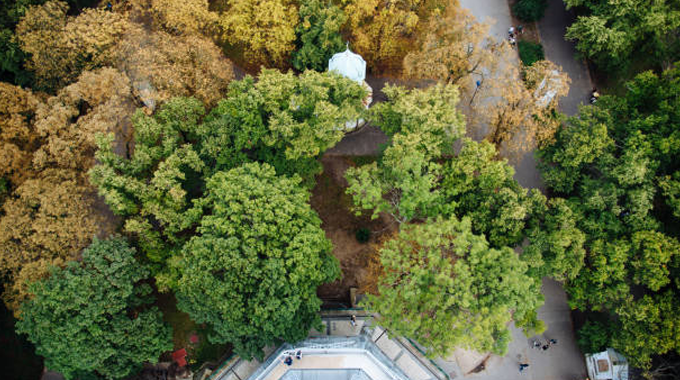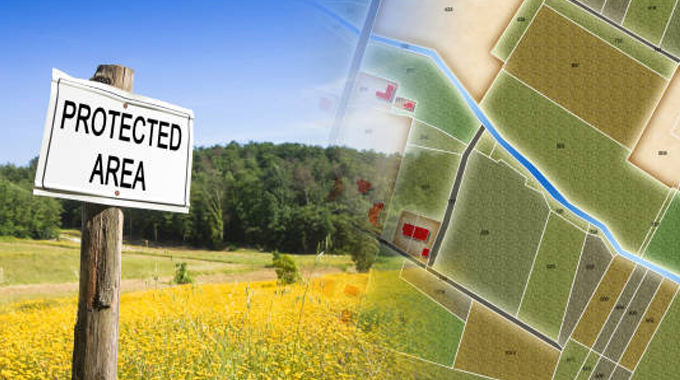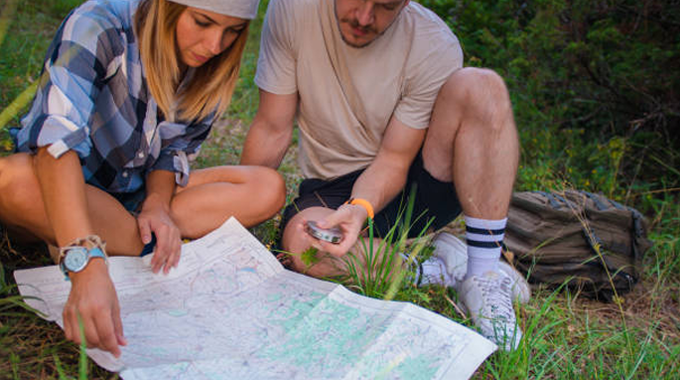Collaborative Approaches to Urban Forestry
- August 19, 2024
- 0 comment
Discover the impact of collaborative urban forestry. Learn strategies to engage stakeholders and enhance green spaces. These approaches involve the combined efforts of various stakeholders, including local governments, community organizations, private businesses, and residents, working together to manage and enhance urban green spaces. By fostering partnerships and shared responsibilities, collaborative urban forestry ensures that trees and green spaces are not only preserved but also integrated into city planning in ways that benefit all community members.

This collective effort leads to more resilient urban environments, improved air and water quality, and enhanced public health and well-being. Moreover, involving diverse voices in the planning and maintenance of urban forests encourages a sense of ownership and stewardship, which is crucial for the long-term sustainability of these vital green spaces.
List of Collaborative Approaches to Urban Forestry
- Key Stakeholders in Urban Forestry Collaboration
- Collaborative Planning and Decision-Making Processes
- Challenges in Collaborative Urban Forestry
- Strategies for Enhancing Collaboration in Urban Forestry
Key Stakeholders in Urban Forestry Collaboration

Local Governments and Municipal Agencies
Local governments and municipal agencies play a crucial role in urban forestry by setting the policies and regulations that guide the development and maintenance of urban green spaces. These entities are responsible for creating comprehensive urban forestry plans, zoning laws, and ordinances that ensure trees are protected and incorporated into city planning. Additionally, they allocate funding and resources for urban forestry initiatives, such as planting programs, tree maintenance, and educational outreach. By leading the charge in policy-making and resource distribution, local governments establish the framework for successful urban forestry management.
Community Organizations and Nonprofits
Community organizations and nonprofits are vital to the success of urban forestry efforts due to their grassroots advocacy and ability to mobilize volunteers. These groups often lead educational campaigns that raise awareness about the importance of urban trees and green spaces, ensuring that community members understand the benefits of maintaining a healthy urban forest. Volunteer mobilization is another key function of these organizations, as they organize tree planting initiatives, clean-up events, and other activities that directly contribute to the expansion and care of urban forests. Their hands-on involvement and community-driven approach help build a strong sense of ownership and responsibility among residents.
Private Sector Involvement
The private sector also plays a significant role in urban forestry through corporate social responsibility (CSR) programs and public-private partnerships. Many companies recognize the environmental and social benefits of urban green spaces and actively participate in urban forestry initiatives as part of their CSR efforts. This can include funding tree planting projects, sponsoring community events, or donating resources such as equipment and expertise. Public-private partnerships further enhance urban forestry efforts by bringing together the resources and expertise of both public and private entities to develop and maintain green infrastructure, ensuring that urban forests are sustainable and resilient.
Residents and Neighborhood Associations
Residents and neighborhood associations are the heart of urban forestry collaboration, as they directly engage with the trees and green spaces in their communities. These groups play a pivotal role in community engagement and participation, organizing local events, advocating for tree preservation, and fostering a culture of environmental stewardship. By involving residents in the decision-making process and encouraging active participation, neighborhood associations help ensure that urban forestry initiatives reflect the needs and desires of the community. Additionally, they often take on the responsibility of maintaining urban trees, whether through regular care or by reporting issues to local authorities, thereby ensuring the longevity and health of urban forests.
Collaborative Planning and Decision-Making Processes

Inclusive and Transparent Planning
Inclusive and transparent planning is essential for the success of collaborative urban forestry efforts. Public consultations and workshops provide a platform for community members to voice their opinions, share concerns, and contribute ideas. This participatory approach ensures that urban forestry plans are not only reflective of diverse perspectives but also have the support and buy-in of the community. Integrating community feedback into urban forestry plans helps to create projects that are tailored to the specific needs of the neighborhood, leading to more effective and sustainable outcomes.
Shared Goals and Objectives
Collaboration in urban forestry requires the alignment of stakeholder interests to achieve common goals. By setting shared objectives, such as increasing tree canopy cover or enhancing biodiversity, stakeholders can work together more effectively and efficiently. Measurable targets, such as the number of trees planted or the reduction of heat island effects, provide clear benchmarks for success and help keep all parties accountable. Shared goals also foster a sense of unity and purpose among stakeholders, motivating them to contribute to the long-term sustainability of urban forests.
Conflict Resolution and Consensus Building
Conflict is inevitable in any collaborative effort, particularly when diverse stakeholders with differing interests are involved. Addressing competing concerns, such as balancing development with conservation, requires effective conflict resolution strategies. Facilitating dialogue among stakeholders through mediation or roundtable discussions can help to identify common ground and build consensus. By constructively resolving conflicts, stakeholders can move forward with urban forestry initiatives that benefit the entire community.
Challenges in Collaborative Urban Forestry

Coordination and Communication Among Stakeholders
One of the biggest challenges in collaborative urban forestry is ensuring effective coordination and communication among stakeholders. With so many parties involved, from government agencies to community groups, maintaining clear and consistent communication can be difficult. Miscommunication or lack of coordination can lead to delays, misunderstandings, or even the failure of projects. Therefore, establishing strong communication channels and regular updates is crucial for successful collaboration.
Funding and Resource Allocation
Securing adequate funding and resources is another significant challenge. Urban forestry projects often require substantial financial investment, and resources must be allocated efficiently to ensure that initiatives are sustainable. Competition for limited funds can create tension among stakeholders, making it important to develop funding strategies that are fair and transparent.
Balancing Development and Conservation Needs
Urban areas are constantly evolving, and balancing the needs of development with the preservation of green spaces is a persistent challenge. Stakeholders must navigate competing interests, such as the demand for housing and infrastructure versus the need to protect and expand urban forests. Finding a compromise that satisfies both development and conservation goals is essential for the long-term health of urban environments.
Ensuring Long-Term Commitment and Sustainability
Sustaining collaborative efforts over the long term can be difficult, especially as leadership and priorities change. Ensuring that all stakeholders remain committed to urban forestry initiatives requires ongoing engagement, monitoring, and adaptation to new challenges. Long-term sustainability depends on the continued involvement and support of all parties involved.
Strategies for Enhancing Collaboration in Urban Forestry
Strengthening Partnerships and Networks
Building stronger relationships among stakeholders is key to enhancing collaboration in urban forestry. By creating collaborative platforms, such as regular stakeholder meetings or online forums, participants can share information, discuss challenges, and develop joint strategies. These networks also help to build trust and mutual understanding, which are crucial for effective collaboration.
Leveraging Technology and Data
Technology can play a significant role in supporting urban forestry collaboration. Using GIS and remote sensing for urban forest mapping allows stakeholders to visualize and analyze data, helping to inform decision-making and track progress. Digital tools, such as online surveys or mobile apps, can also facilitate public engagement by making it easier for residents to provide feedback and participate in urban forestry initiatives.
Education and Outreach
Raising awareness about the benefits of urban trees is essential for building community support and involvement. Education and outreach programs can inform residents about the importance of urban forests, the role they play in mitigating climate change, and how individuals can contribute to their preservation. Training programs for community members and volunteers can also equip them with the skills needed to participate actively in urban forestry efforts, ensuring that projects are both effective and sustainable.
Frequently Asked Questions (FAQs)
1. What is urban forestry, and why is collaboration important?
Urban forestry involves the management and care of trees and green spaces within urban areas. Collaboration is important because it brings together various stakeholders—such as local governments, community organizations, private businesses, and residents—to share resources, expertise, and responsibilities. This collective effort ensures that urban forests are sustainably managed and that their benefits are maximized for all members of the community.
2. Who are the key stakeholders involved in urban forestry collaboration?
Key stakeholders include local governments and municipal agencies, community organizations and nonprofits, private sector companies, and residents or neighborhood associations. Each group plays a distinct role, from policy-making and funding to grassroots advocacy, volunteer mobilization, and stewardship of urban trees.
3. How do local governments contribute to urban forestry collaboration?
Local governments are responsible for setting policies, regulations, and zoning laws that protect and manage urban green spaces. They also allocate funding and resources for urban forestry projects and play a central role in coordinating efforts among different stakeholders.
4. What role do community organizations and nonprofits play in urban forestry?
Community organizations and nonprofits lead grassroots advocacy and education efforts, raising awareness about the importance of urban forests. They also organize volunteer activities, such as tree planting and maintenance, which directly contribute to the growth and health of urban forests.
5. How does the private sector get involved in urban forestry?
The private sector participates in urban forestry through corporate social responsibility (CSR) programs and public-private partnerships. Companies may fund urban forestry projects, sponsor community events, or contribute resources and expertise to green infrastructure development.
6. What is the significance of resident and neighborhood involvement in urban forestry?
Residents and neighborhood associations are crucial for the success of urban forestry because they engage directly with their local green spaces. Their involvement in community engagement, participation, and stewardship helps ensure that urban forests are well-maintained and reflect the needs of the community.
7. How are urban forestry plans created through collaboration?
Urban forestry plans are created through inclusive and transparent processes that involve public consultations, workshops, and integrating community feedback. Collaborative planning ensures that the goals and objectives of urban forestry initiatives align with the interests of all stakeholders.
8. What are some common challenges in collaborative urban forestry?
Challenges include coordinating communication among diverse stakeholders, securing funding and resources, balancing development with conservation needs, and ensuring long-term commitment to urban forestry initiatives.
9. How can these challenges be addressed?
Challenges can be addressed by strengthening partnerships and networks, leveraging technology and data for better planning and public engagement, and conducting education and outreach programs to raise awareness and train community members.
10. Can you provide examples of successful collaborative urban forestry projects?
Examples include city-level initiatives where local governments, community groups, and private companies work together to enhance urban green spaces, as well as community-led tree-planting projects that transform neighborhoods. Public-private partnerships also serve as successful models for integrating corporate resources into urban forestry efforts.
11. What strategies can enhance collaboration in urban forestry?
Enhancing collaboration can be achieved by building stronger stakeholder relationships, creating platforms for ongoing dialogue, using technology for data-driven decision-making, and increasing public engagement through education and outreach initiatives.

Gilbert Griffin
Forestry AuthorGilbert Griffin is a forest management expert specializing in sustainable practices, forest health, conservation, and land management. With extensive knowledge in pest control, disease management, and habitat restoration, Gilbert develops strategies to preserve forest ecosystems and biodiversity. Passionate about the natural world, Gilbert adapts to changes in forest management and stays updated through continuous learning. Gilbert also provides seasonal advice to optimize forest care throughout the year.









Leave your comment